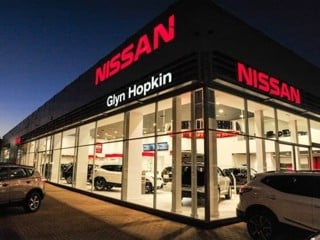Pricing used cars correctly sets a beneficial chain of events in motion – the vehicle figures higher in online classified searches, a potential buyer is more likely to click and enquire and the chance of a sale is increased.
Price-setting
Each of Cambria Automobiles’ sites sets its own used car prices. These are checked three times a week by the central digital team. The team also produces reports using BCA Dealer Pro, Auto Trader iControl and the group’s own software, which determine retail market price and ensure that Cambria’s listings stay within 3% of that.
Together with sales specialists and product geniuses, each dealership employs a digital operative, who provides analytical information to their sales manager.
Mark Lavery, Cambria’s chief executive, said: “I would describe them more as tech company employees. They are mathematicians, they are data checkers, they have got some rudimentary understanding of how an algorithm works.
“If you’re a stock broker looking at a screen and seeing what’s going up in green and what’s going down in red, that’s what our digital operatives do at each individual retailer.
“Our businesses are looking at their prices daily. The highly proactive ones are doing it on an hourly basis. We’re changing prices three, four, five, six times a week.”
Hendy Group uses traditional methods, such as CAP valuation, and data providers, such as iControl and Cox Automotive, to set prices and determine the desirability of vehicles.
Simon Palmer, used car sales director, said: “You have a window of 30 days where you stand a chance of maximising the price.”
Used car managers or general sales managers usually set retail prices, but the process is managed differently at Hendy Group’s Exeter business.
“The general sales manager’s job is to sell, he doesn’t get involved in any of the pricing or the reductions. I think the valuing of the cars will still be done on-site, but we will come to a time where the price-setting and ongoing price management will be done centrally,” said Palmer.
Thirteen of Hendy’s 24 sites operate a standalone used car department and will account for 11,000 of the expected 14,500-15,000 units it expects to sell this year. One site selling 1,200 cars a year employs a sales manager, sales controller, five executives and three product geniuses.
Graeme Potts, the managing director of Eden Motor Group, helps to oversee used car pricing along with each site’s sales manager and general sales manager. The group’s digital pricing administrator, appointed four years ago, is responsible for overseeing digital pricing and the quality of images online and remarketing.
Potts said: “We do use industry guides, but our pricing is primarily driven by our market knowledge. Pricing cars is a multi-faced process. We try not to link the offer price with our purchase price and the prep costs.”
There’s no split between new and used at Glyn Hopkin, although a three-person central team looks at pricing, image quality, vehicle descriptions, overall presentation and to make sure all enquiries are recorded and dealt with properly.
Sally Germain, Glyn Hopkin’s brand director, used cars, said: “Our cars are priced centrally to ensure we have price parity across all stock. We use CAP and look at market prices as a guide. I will add suggested retail prices and share these with the brand director before they are issued to all sales staff and the systems are updated.”
Specification and options
Cambria places a lot of importance in personalisation of its listings and includes a comment from, and ideally picture of, a sales manager with the car’s description.
Lavery said: “It’s ‘tell and sell’. If it’s just price-driven, then everything else pales into insignificance and you can win the race to the bottom. You don’t want to win the race to the bottom.”
For prestige marques, such as BMW, Mercedes and Audi, “specification is absolutely everything”, according to Palmer.
“There are cars we won’t even buy in that market if they haven’t got certain extras or factory-fit options,” he said.
It is here that the data providers come into their own for Palmer, who criticises the traditional pricing tools for not accommodating price variations for vehicles with substantial specifications or factory-fitted options.
At Eden it’s a different story: “The market is now less willing to give a premium for higher-spec cars. Customers are not particularly bothered if a car has 19” wheels compared to 18” or if the alloys are options rather than standard,” said Potts.
Glyn Hopkin only retails its own brands, so specification and options are checked when setting the retail price, although a styling pack or a higher value option can command a higher price.
Stock turn vs margin
At Cambria, used car sales are flat year-on-year (albeit from a high comparative year) but its average days in stock figure was 27.9 for the first six months of its financial year, bettering its target of 30.
Lavery said: “We turn our cars twice as quick as industry average . We also increased our used car profit per unit on a like-for-like basis by 7%. We are making £1,711 for each used car we transact on.”
Having introduced a “velocity trading strategy”, which aims to sell cars within 30 days, Lavery puts the results down to several factors, including the digital operative’s input, prepping cars in less than 48 hours and using product geniuses to demonstrate vehicles.
He said: “We started our velocity trading strategy five years ago, but it took us three years to get all our heads of business to understand it and that has had a real tangible impact. It’s a science now and it’s a data-driven science.”
Stock turn and maximising profit go hand in hand, according to Palmer: “I certainly don’t want to be the cheapest. Good pricing and turning it quickly does give you a chance of increasing your profit margins. I would rather have a reduced margin and sell the car quickly.”
On average, Hendy turns stock 10.4 times a year, although some of its Ford sites can turn 11 or 12 times.
Potts said: “You need to view your inventory as an asset that reduces in value over time. stock turn is 13 times a year.
“We deliver our fastest stock turn in our space-constrained sites. Our best-performing site for stock turn achieves 25 a year. It’s a combination of factors including the used vehicle display, distribution and storage. It all starts and finishes with us seeing ourselves as retailers and not as motor traders.”
Germain said: “We aim to turn our stock within 45 days, but this isn’t always achievable. Our best-performing branches are the ones that get their stock imaged and prepped as soon as it arrives.”
Classified sites’ influence
Potts uses the analytics provided by the classified sites, but said they are not followed “doggedly”.
“We also apply our market intelligence and our intuition,” he said.
Having a ‘great price’ tag on all cars all the time isn’t important for Palmer, who believes Hendy’s heritage “counts for a lot”.
“An overpriced car will take you longer to sell, but that’s not changed in 20 years. The difference is the customer is using different tools and data to determine a lot sooner that a car is overpriced.
“I do get a bit vexed sometimes, when another dealer may change their package, which suddenly pushes all my cars down the listings and I have to up my spend to compete.”
Glyn Hopkin monitor prices and makes use of the classified websites’ ‘back offices’, said Germain.
“The ‘market price’ and ‘great deal’ tags on classified ads can work both for and against us and I can’t see this changing. As long as we price our stock correctly, I don’t see this as too much of an issue, especially once we have had the opportunity to explain the benefits of buying a used car from a main franchised dealer group.”



















Login to comment
Comments
No comments have been made yet.